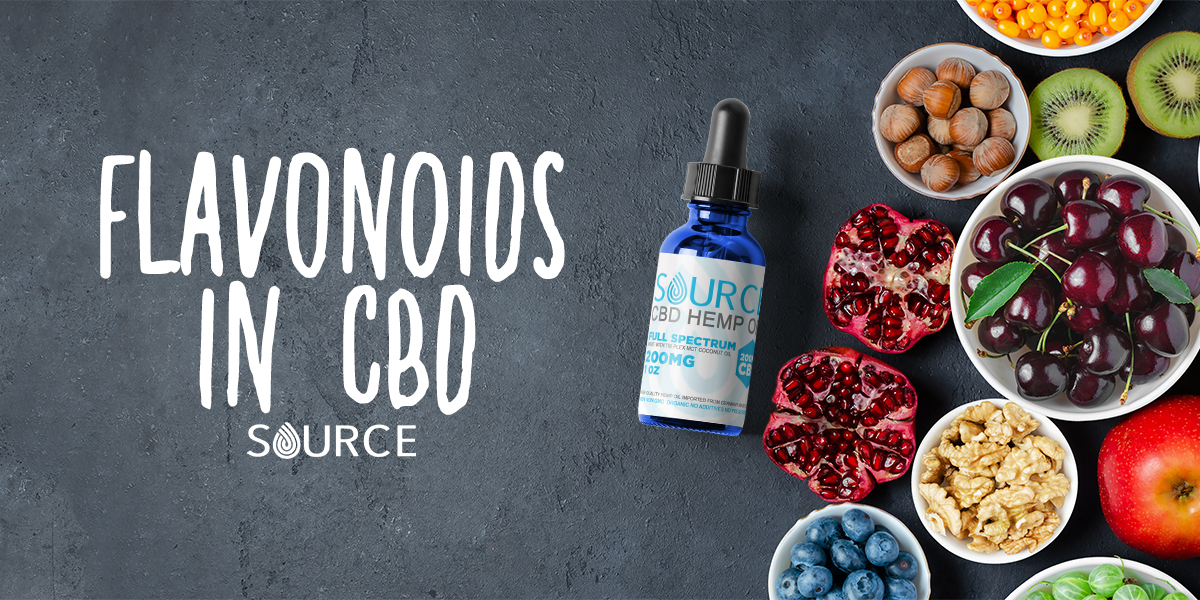CBD Oil for Health
Flavonoids in CBD: No, It’s Not About The Flavor
As purveyors of full spectrum CBD oil, we’re often asked about why full spectrum is different. People want to know about all the different things that you find in full spectrum that add to the entourage effect.
That’s the term that describes the way all the beneficial elements in CBD work together in your body. That includes cannabinoids, terpenes, flavonoids, etc. It’s when they work in synergy to create an effect that’s more powerful than what they can do on their own.
And in the past we’ve talked at length about the different cannabinoids – CBD, CBG, CBN, THC – as well as terpenes. But we’ve never really covered the flavonoids in CBD.
It’s time to remedy that.
What are Flavonoids?
Flavonoids are phytonutrients, natural compounds found in plant foods.
If you don’t know anything about flavonoids, you’d probably read the name and assume that these compounds are what give CBD its flavor. And sure, that would make sense. However, as odd as it might seem, the term flavonoid has nothing to do with flavor. It actually comes from the Latin word for yellow, flavus.
Rather than flavor, flavonoids are the compounds in plants that give them their color. Think about cannabis’ dark green hue, the bright yellow of a lemon, or the deep red of a strawberry. These colors all come from flavonoids.
And while plants rely on these colors to attract pollinators or send signals, that’s not all they do. They filter ultraviolet light, remove toxins, and protect plants from bacteria, parasites, and outside threats.
Plus, it turns out that they also have many health benefits!
Flavonoids in CBD
Flavonoids make up around 10% of the over 200 different biological compounds in the hemp plant.
There are around 6,000 known flavonoids, and CBD (and cannabis in general) has about 20. We won’t cover all 20, but we will cover some of the most powerful and well studied.
- Cannaflavin. Cannaflavin helps give cannabis its dark green color, and these flavonoids are unique to the cannabis plant. Researchers are currently investigating their anti-inflammatory properties. In fact, some studies suggest Cannflavins exhibit anti-inflammatory activity that is thirty times that of aspirin.
- Anthocyanin. Anthocyanin gives plants their purple color. Research notes that it can be helpful for overall good health and for prevention of diseases, as well as improving brain function.
- Luteolin. Luteolin is a yellow flavonoid, found in high quantities in green leafy vegetables. It has been shown to have various pharmacological effects including anti-inflammation, anti-oxidant, anti-tumor, cardioprotective and neuroprotective properties.
- Kaempferol. Research shows that kaempferol inhibits cancer cell growth and angiognesis and induces cancer cell apoptosis. Additionally, kaempferol appears to preserve normal cell viability, in some cases exerting a protective effect.
- Orientin. This versatile flavonoid has many benefits: antioxidant, antiaging, antiviral, antibacterial, anti-inflammation, vasodilatation and cardioprotective, radiation protective, neuroprotective, and antidepressant-like effects.
- Quercetin. Many people take quercetin for allergies, but it’s also popular for the treatment of vascular and cardiovascular disease in addition to being a go-to antioxidant and anti-inflammatory.
Flavonoids in CBD are abundant, and they’re just one more reason to turn to this valuable compound. Don’t forget – to get all the benefits, you want to turn to a full spectrum CBD oil so as not to miss out.

